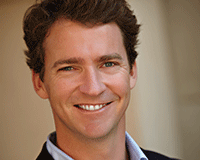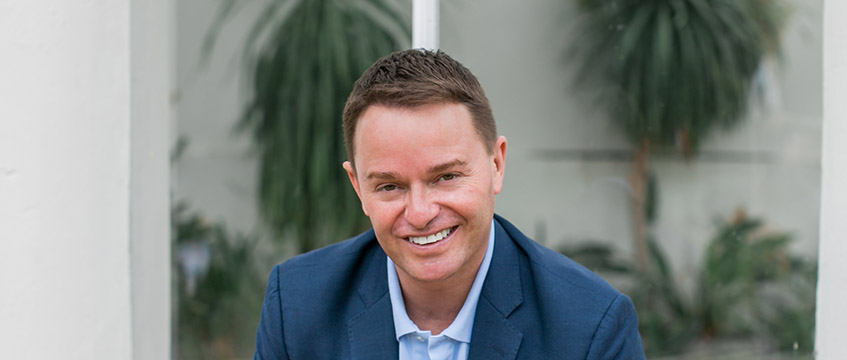If you are going to take on a commercial development one quarter the size of one of the world’s greatest cities, surely you would spend millions on feasibility studies, wouldn’t you- Samantha McClary braves the Texan heat to find out
Ryan McCord is as refreshing a chief executive to interview as a frozen lemonade is to drink in the stifling Houston heat.
He is the man leading one of the largest development projects in America. Generation Park: a giant scheme 20 minutes outside central Houston that spans some 4,000 acres – one quarter the size of Manhatten – and will take generations to develop. But when asked about meticulous planning, number crunching and sleepless nights, he shrugs. “We’ve not really done any market studies,” says McCord. “You just hope it’s feasible.”
But McCord is no fool. His family has been in real estate for 40 years. OK, his father, Rick, might have thrown up his first office building with no real idea of what he was doing – “My father will tell you that himself. But that’s all entrepreneurs, right?” – but McCord Development does have form (see box).
And McCord himself has a background that includes serving as risk manager for GE Capital Real Estate in Tokyo, participating in more than $2bn (£1.2bn) of equity and debt transactions in Japan, Taiwan, China, Korea and the Czech Republic, and as a real estate consultant at Ernst & Young in Japan and North America.
He says masses of market studies are not needed when it comes to knowing that the Generation Park scheme will work. “A lot of it is common sense. It is close to downtown, close to the airport, Houston port. It makes perfect sense to develop here.”
Location, location, location
Generation Park sits on Beltway 8, the second ring road around the city – The Loop, the inner ring road, was the city’s initial boundary. Development has been coming out the ground on almost every section of Beltway 8, except in the direction of McCord’s land. Until now. Some 11,000 houses are being built by five different developers close to Generation Park, offering homes from $200,000 all the way up to $1m-plus and providing a workforce for the major corporates McCord is certain he will attract.
His commonsense approach is already paying off. In 2012 McCord sold 173 acres of the masterplanned development to energy equipment provider FMC Technologies, a Fortune 500 company that last year turned over more than $7bn. FMC is under way with works on the first phase of its little block of Generation Park land: a mere 1m sq ft of offices.
Eventually, the firm will move around 8,000 workers to the site, and although lips are sealed on exactly how much development will occur in phases two, three and four, rumour has it that the end development value will have a lot of zeroes – let’s just say more than eight of them. And that plot of FMC land represents just 4% of the total landmass that makes up Generation Park.
McCord is both unfazed and excited by the scale. He knows that this is a project that will span many decades, and while he may nonchalantly brush away any need for market studies he has done his research and got his ducks in a row.
Speaking of ducks. The boardroom at McCord’s HQ at One City Center in downtown Houston is full of them. The significance? It turns out, when McCord Senior started out, working on his first office block, he enlisted the help of an old chum. The project not only launched McCord Developments but launched his pal’s career as well. Knowing the McCords’ love of hunting, the friend has, ever since that first instruction, presented Rick with an antique duck decoy every time he wins a major new instruction. A thank-you and appreciation for the whole company to see.
Live and work
But back to Generation Park. The sheer scale and current emptiness of the site means that McCord can be truly innovative and develop something unique. Something that responds to the way in which people work and how their lives revolve around business. A development that makes working and living easier bedfellows.
A big part of that is developing the S.PA, pronounced ess-par and officially known as the slightly less sexy Subsea Lane Pedestrian Advantage Area.
The 52-acre lifestyle element of the park has been designed to save workers time during their busy days, giving them easy access to amenities at the times and in the locations they are needed.
“It is very rare for commercial districts to be planned on our scale,” says McCord. “We get to think about what people need for their working days. We get to think about things like why people like to sit at sidewalk cafés – because we like to sit and judge people. That’s innately human. We can create that.”
McCord says the S.PA will be 2m sq ft of what people need. All the amenities they could want during their working day in one place. This will include everything from restaurants, cafés, shops, entertainment, gyms, somewhere to drop the kids off, somewhere to get your car serviced, even somewhere to get your pet pampered. All on the doorstep of the office. The aim is to take the hassle out of having to balance life and work.
It will even aim to subconsciously promote health and wellbeing.
“The S.PA will be designed so it will be easier to get around on foot than car,” says McCord. “It’ll be ‘hike and bike’.”
In a bid to encourage break-time wanders, the S.PA will feature several five-minute-radius walks and will use Houston’s flat terrain to create bike routes around the campus. A 20-acre signature lake is also being developed that will be connected to more than 50 miles of hikes.
Wellbeing
People and their wellbeing is a big focus for McCord. After all, a healthy workforce is a productive workforce.
And with the luxury of time that Generation Park offers, McCord is able to be innovative and experimental.
After reading a report from the Department of Energy’s Lawrence Berkeley National Laboratory that revealed how a moderately high indoor concentration of CO2 can significantly impair decision-making abilities, McCord has started “experimenting” on his staff. Or so he jokes. The company is monitoring CO2 output in its headquarters, however, and is in talks with a local university about undertaking a more in-depth study.
According to the Berkeley study, subjects showed a significant reduction in decision-making abilities at CO2 levels of 1,000 parts per million and large reductions at 2,500ppm. The most dramatic declines in performance were for taking initiative and thinking strategically.
McCord thinks this has potential ramifications for office design. Concentrations of CO2 indoors, the primary source of which is humans, can be several thousand ppm. Squeezing a lot of people in to an office floor and not thinking about how that CO2 is dispersed could have a major impact on the productivity of staff. Design the building correctly, think about the use of each floor, and you will have happy workers and therefore a happy tenant – or so goes McCord’s argument.
“We have a great blank canvas, a licence to innovate,” says McCord. “We are not beholden to legacy technology. We are always looking for the best wheel that has been invented. Or if we can’t find it, then we’ll invent it.”
And that’s the refreshing thing about McCord. He is willing to try and to do. “The best resource for inspiration is experience,” he says.
Much of his inspiration came from going to boarding school in New Jersey. During his time there he got to see the giant pharmaceutical developments that provide space for the multinational corporations that have made their home in the state and to learn from them. New Jersey, known as the “Medicine Chest of the World”, is the pharmaceutical equivalent of oil-focused Houston, with as many as 17 of the world’s 20 largest pharmaceutical leaders based there.
McCord’s time in forward-thinking Tokyo during the early part of his career and visits to other major research and technology campuses across the US have also all fed into his vision for Generation Park.
And it is a vision that has been supported by millions of dollars of investment. More than $400m is already being invested in works on site, including the S.PA and 1.4m sq ft of speculative industrial development. Entire forests have already been grown to make sure the area fits with the residential communities that surround it and that it provides a pleasant place to be, not only for work. With this end, collaborative discussions are being had with neighbouring developers.
McCord may joke that he has no need for a market study to predict whether Generation Park is going to work or not. But there is no doubt he is a man invested in its future. The site has taken more than 10 years to assemble and will take many more to develop out. And while the first duck has been firmly placed in its row with the securing of FMC as a major tenant, McCord says now is the time to go “big elephant hunting”.
McCord Developments: at a glance
Founded in 1973
Developed more than $2bn of projects across the US
4m sq ft of industrial and commercial
6,700 homes
5,600 acres of land
Original developer of the 1,500-acre Summerwood, a residential community close to its latest project, the 4,000-acre Generation Park
Second-largest private landlord in Harris County (Howard Hughes Company is the largest)
Samantha.McClary@estatesgazette.com
Houston special: see also
• 50 City slickers• 56 Thinking big











